This post may contain affiliate links. Please read our disclosure policy.
How to juice a lime with or without a juicer, using one of 6 methods! Including top tips, FAQs, and how to freeze limes (whole, sliced/wedges, juice, zest) for longer-term storage!
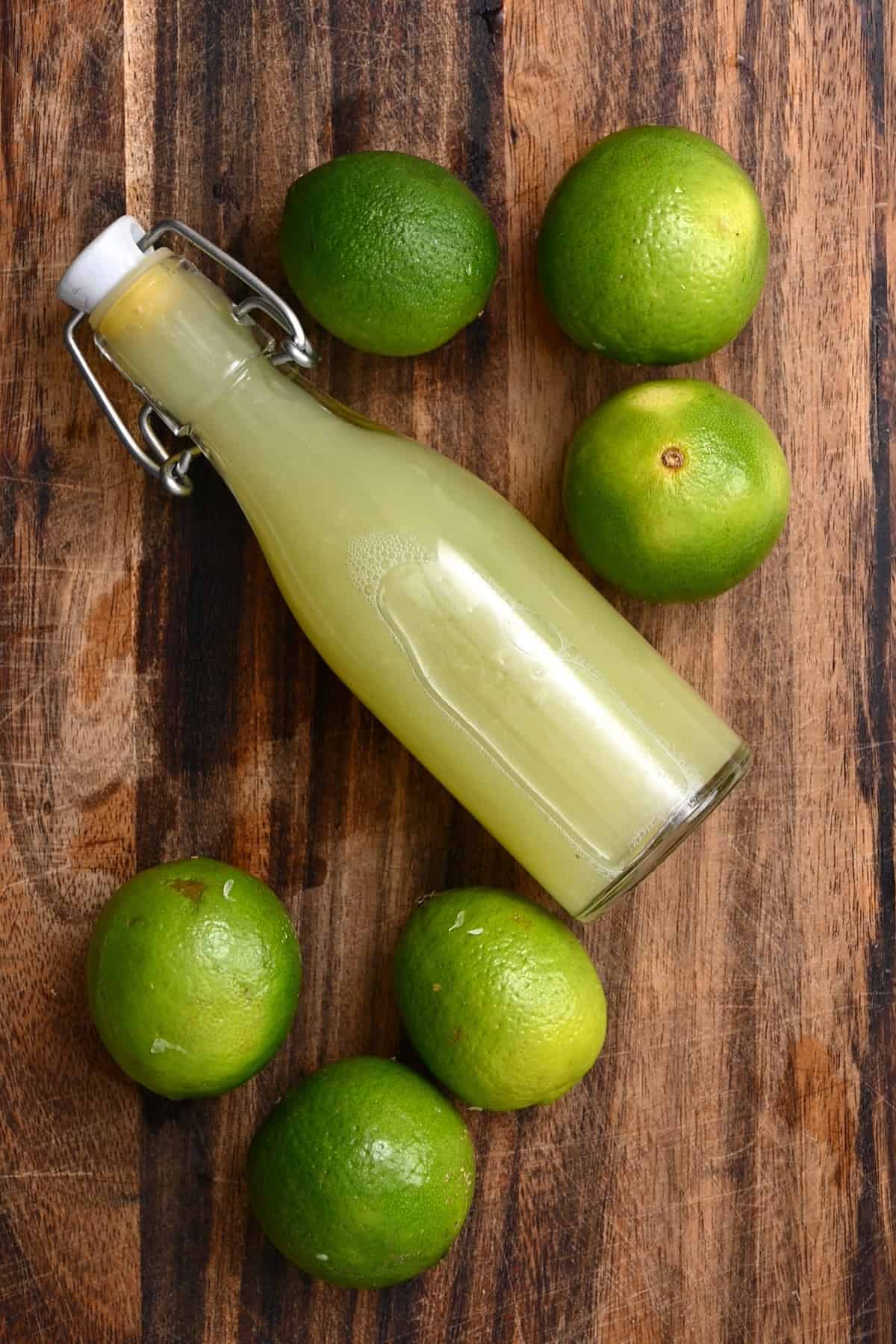
While I’ve already shared posts for my top methods of how to juice lemons (and how to zest lemons), I then turned to Instagram to ask for any more FAQs. I was inundated with lime-related questions, so I thought it was worth writing this separate post on how to juice limes with all the top FAQs.
Within this post, I’ve included my top 6 methods for juicing limes, along with top tips and plenty of lime-related FAQs. More so, I’ve included a section on how to store limes (whole, slices, or fresh lime juice).
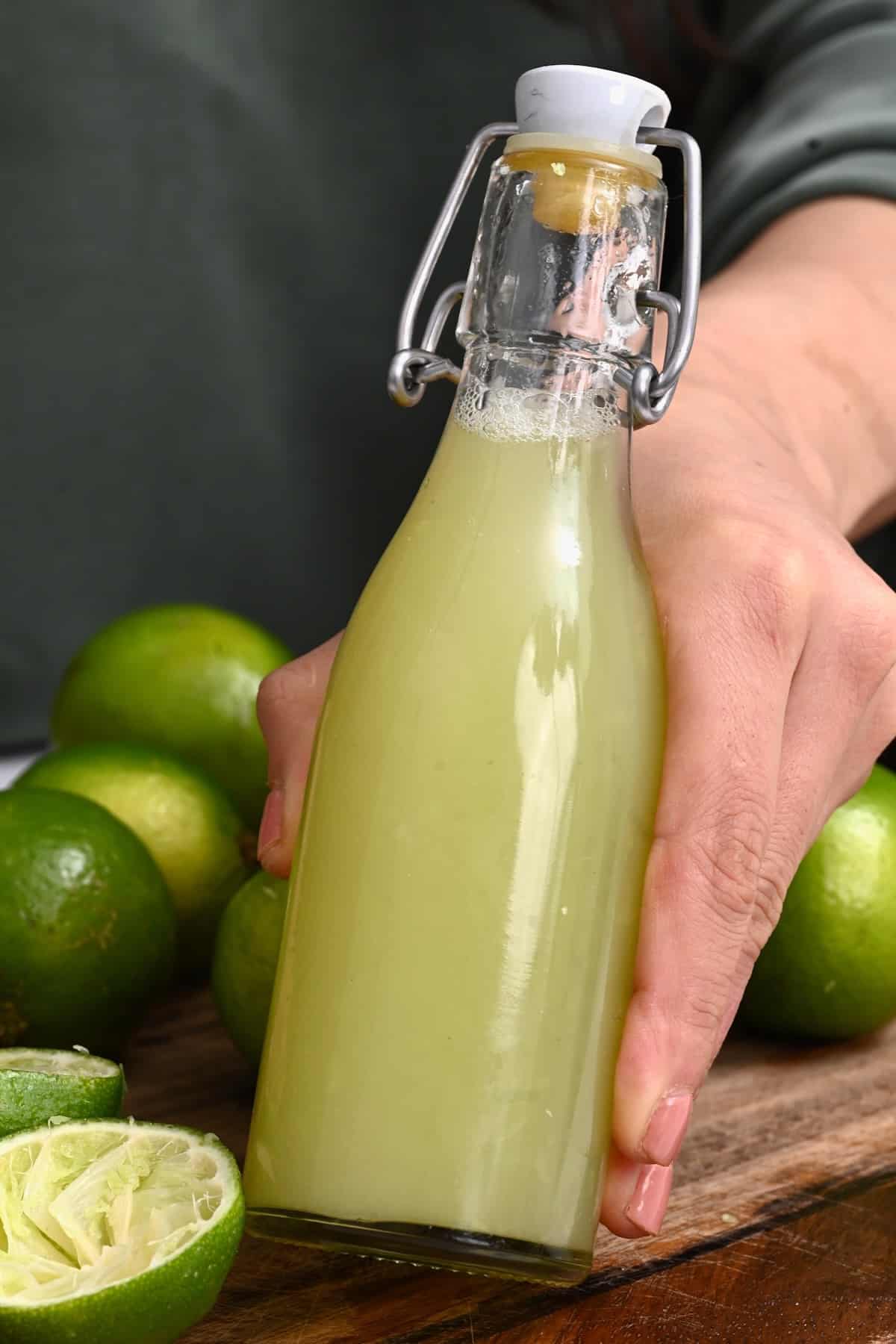
Fresh lime juice is zingy, refreshing, and perfect for making pineapple limeade, adding to cocktails, mixing into desserts (like cheesecake and tarts), drizzling over pancakes, and more! It’s also a great addition to salad dressings (like this strawberry vinnaigrette) and marinades. So really, there’s no shortage of ideas to use this zingy ingredient.
Want to save this recipe?
What’s needed
- Limes: use unwaxed organic limes whenever possible. That way, you can use the zest, too, and there’s no need to go through the extra steps of removing the wax layer first.
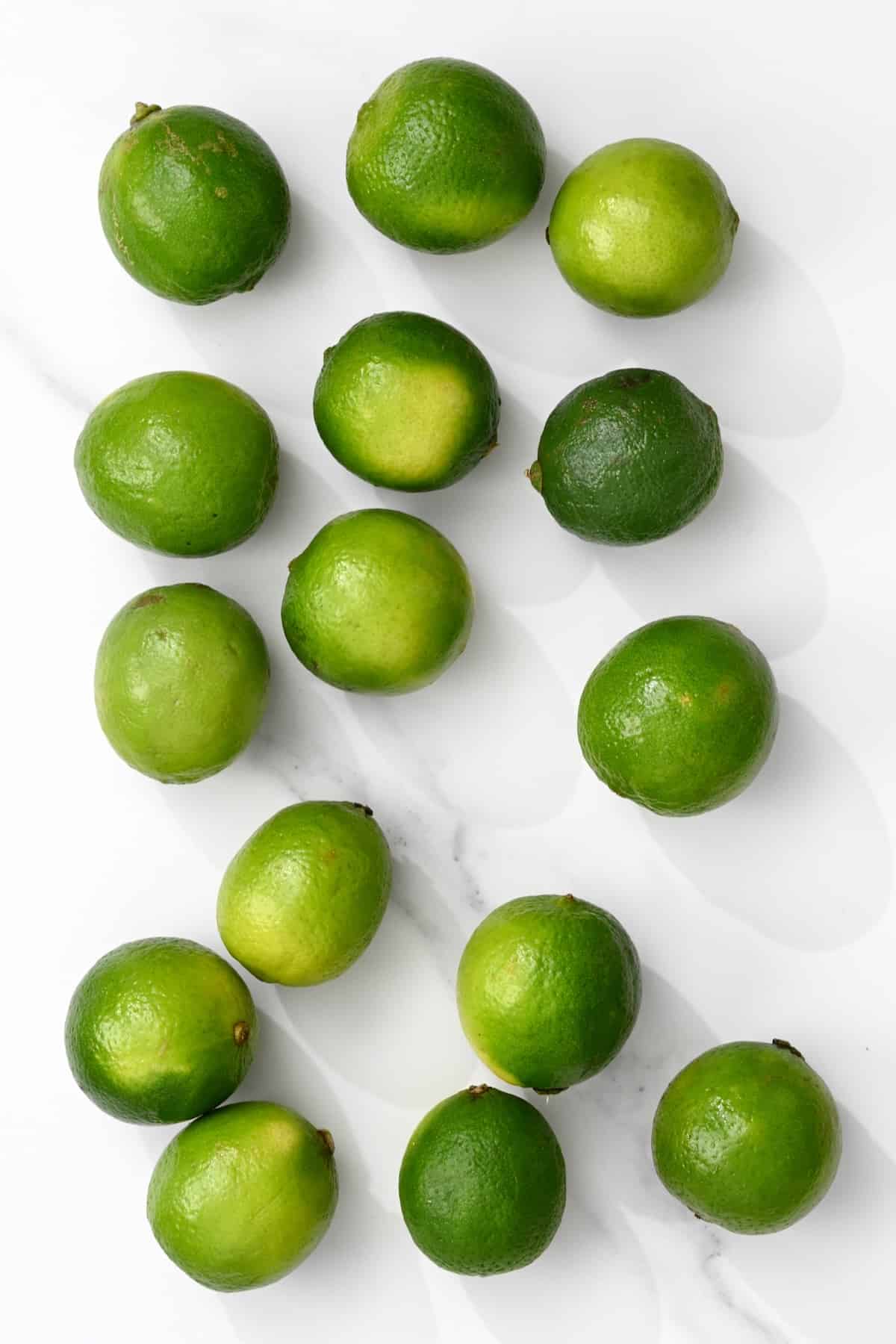
If you’re using waxed limes, you can easily remove this wax layer by placing the fruit in a large bowl of hot water for several seconds and then scrubbing them with a vegetable brush. I always recommend zesting citrus before juicing them, as it’s far easier beforehand.
- The tools: learn how to juice limes with several tools, including:
- An electric juicer
- Manual citrus reamer
- A fork or spoon
- A stand mixer
- A skewer
- By hand (with the help of a microwave/freezer).
You’ll also need a sharp knife and a cutting board.
How to juice limes with and without a juicer?
No matter which of the below methods you use for lime juice, here are a couple of tricks for how to get the most juice out of lime (and most citrus fruits). These include:
- Roll the limes on the countertop to break up/loosen the membranes.
- Microwaving them for 20-25 seconds can help also loosen membranes and make it easier to extract the juice.
- Slice them lengthwise instead of crosswise when juicing.
Make sure to also always work with room temperature limes, as they’ll be softer, so easier to juice.
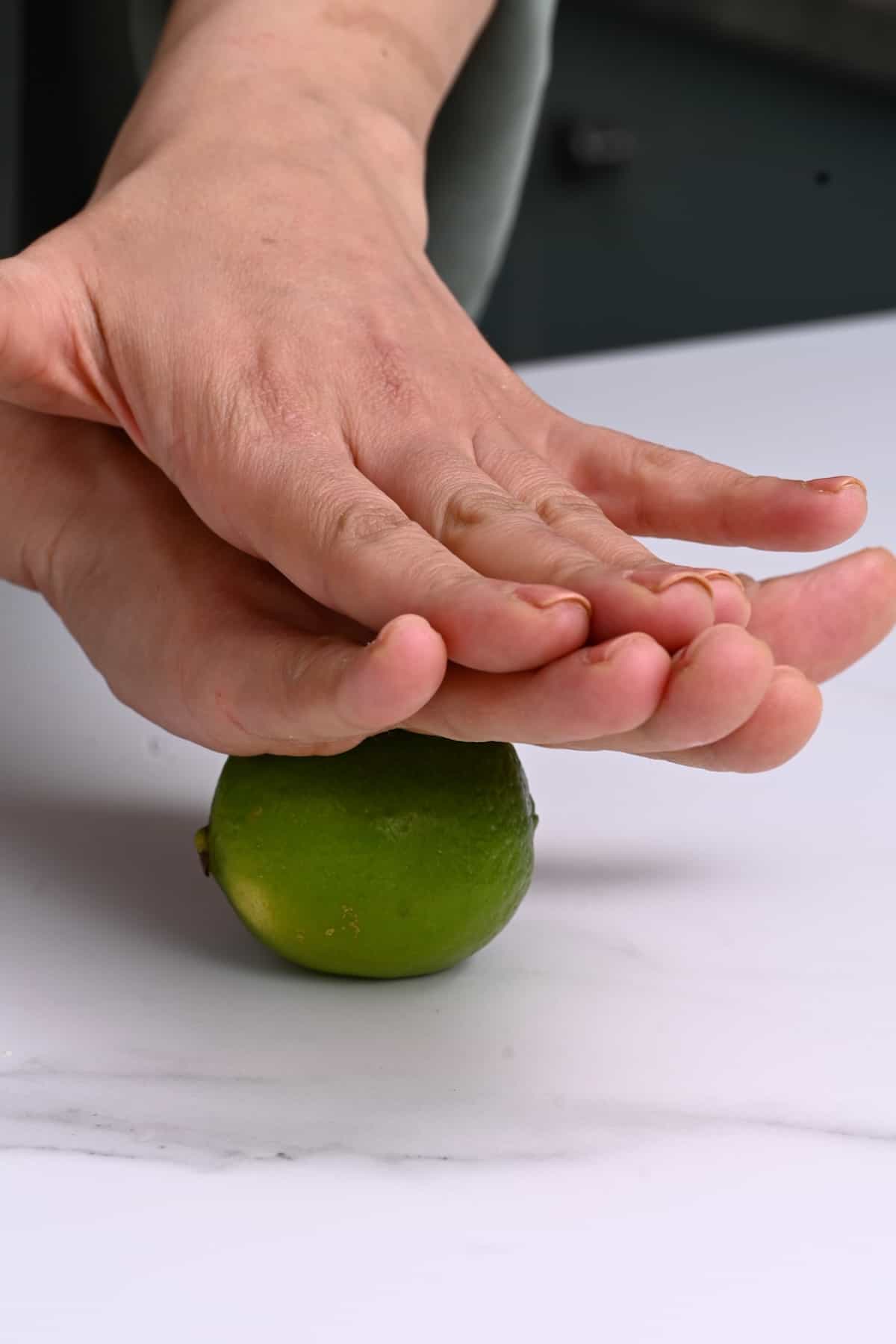
Electric citrus juicer method
This method is best for large quantities (like if you’re making tons of limeade), using an electric “reamer” style juicer.
- Slice the limes in half.
- Press each lime section against the reamer and let the machine do its thing.
Most electric citrus juicers naturally filter the pulp/seeds from the fresh lime juice.
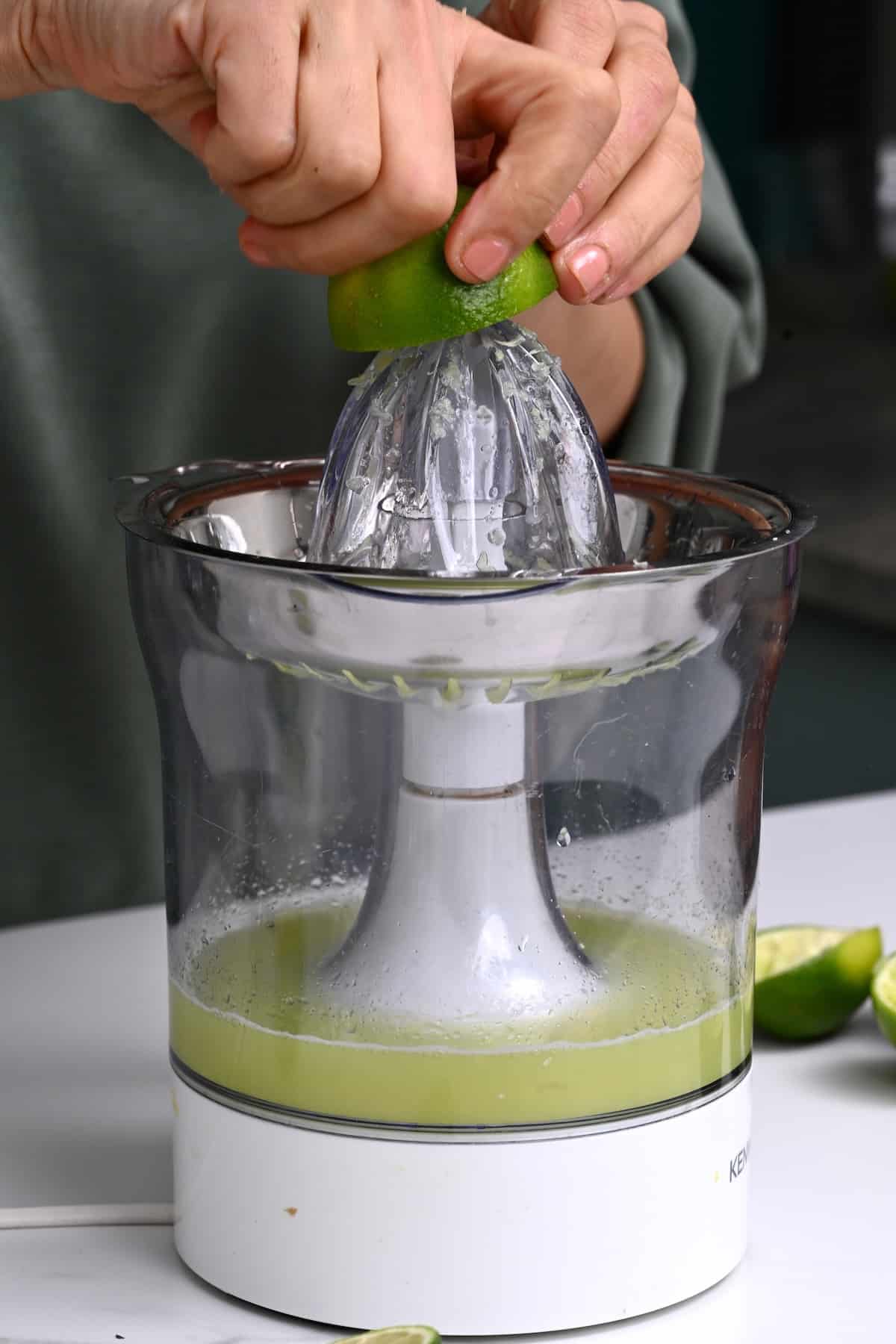
Citrus reamer/handheld citrus squeezer
You can purchase several types of manual citrus juicers, including tabletop juicers that contain a little bowl/container to filter and contain the juice. Alternatively, you can buy hand-held metal or wooden reamers only or hinge-based juicers you’ll need to juice into a container and strain yourself.
No matter which type of juicer you’re using, you can take a couple of extra steps to get the most juice out of the limes. First, microwave the lime/s for 20 seconds and roll them back and forth against your kitchen counter to loosen up the membranes.
- Tabletop version: slice the lime/s in half and, similarly to the electric juicer, place each over the juicer. Twist it back and forth over the reamer to release as much juice as possible.
- Hand-held reamer/Hinge-based juicer: first, place a bowl/container beneath where you’ll juice the limes. To strain the pulp/seeds, I recommend placing a fine-mesh sieve above it. For the hand-held reamer, simply hold a half piece in the palm of your hand and use your other hand to press the reamer into the cut side of the lime halves and twist back and forth to release the juice. For a hinge-based juicer, place the lime half into the tool and then press it tightly close to squeeze out as much juice as possible.
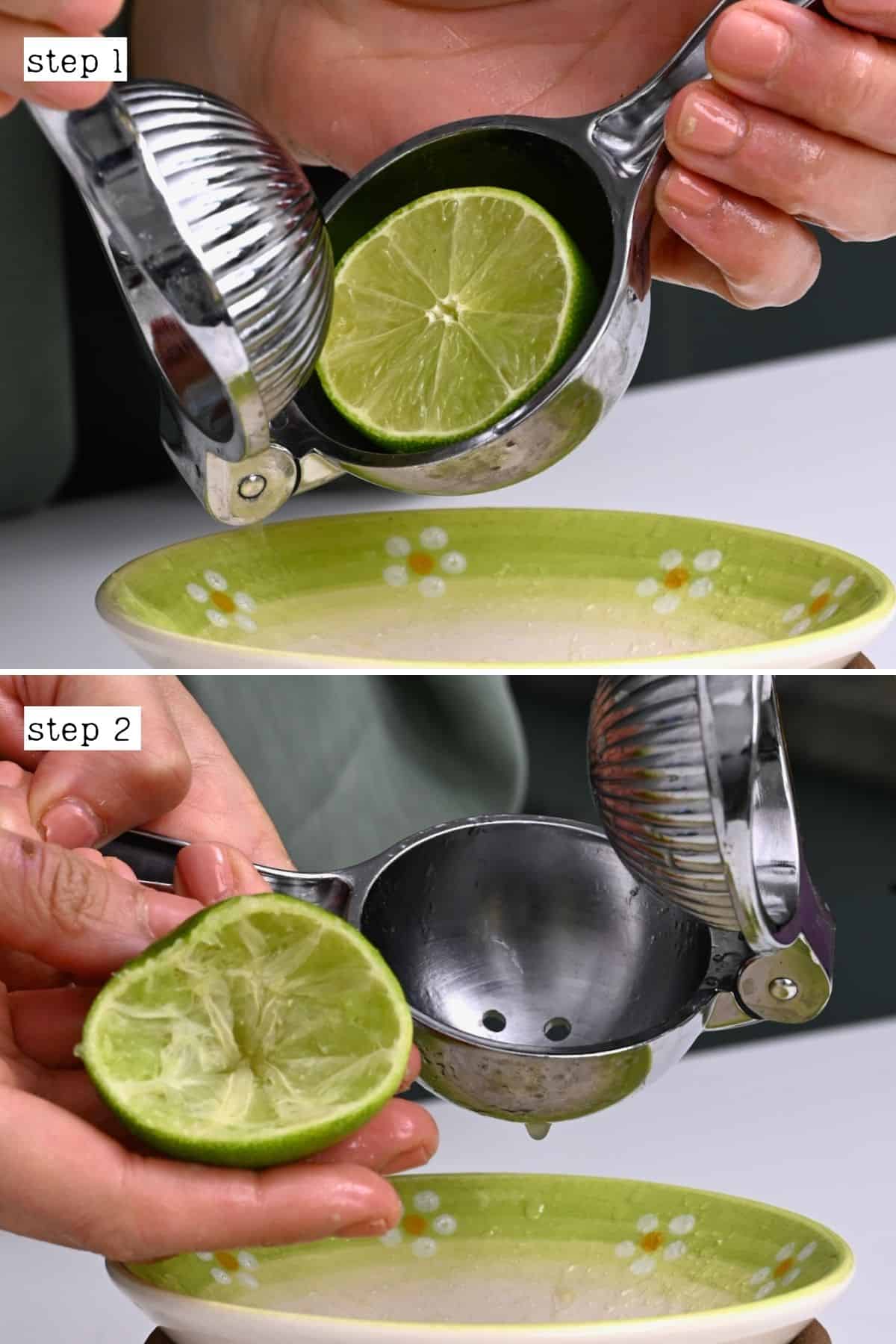
Fork or spoon method
If you don’t have a specific juicing tool, a fork or spoon can be used with impressive results.
- First, microwave the limes for 20 seconds (each) and roll them back and forth on the kitchen counter several times to help loosen the membranes.
- Then, slice each lime in half and, working on one piece at a time, place them over a sieve-lined bowl.
- Press either a spoon or fork into the center of the lime segment and squeeze and twist. Use the fork/spoon to scrape against the lime’s sides to extract as much fresh lime juice as possible.
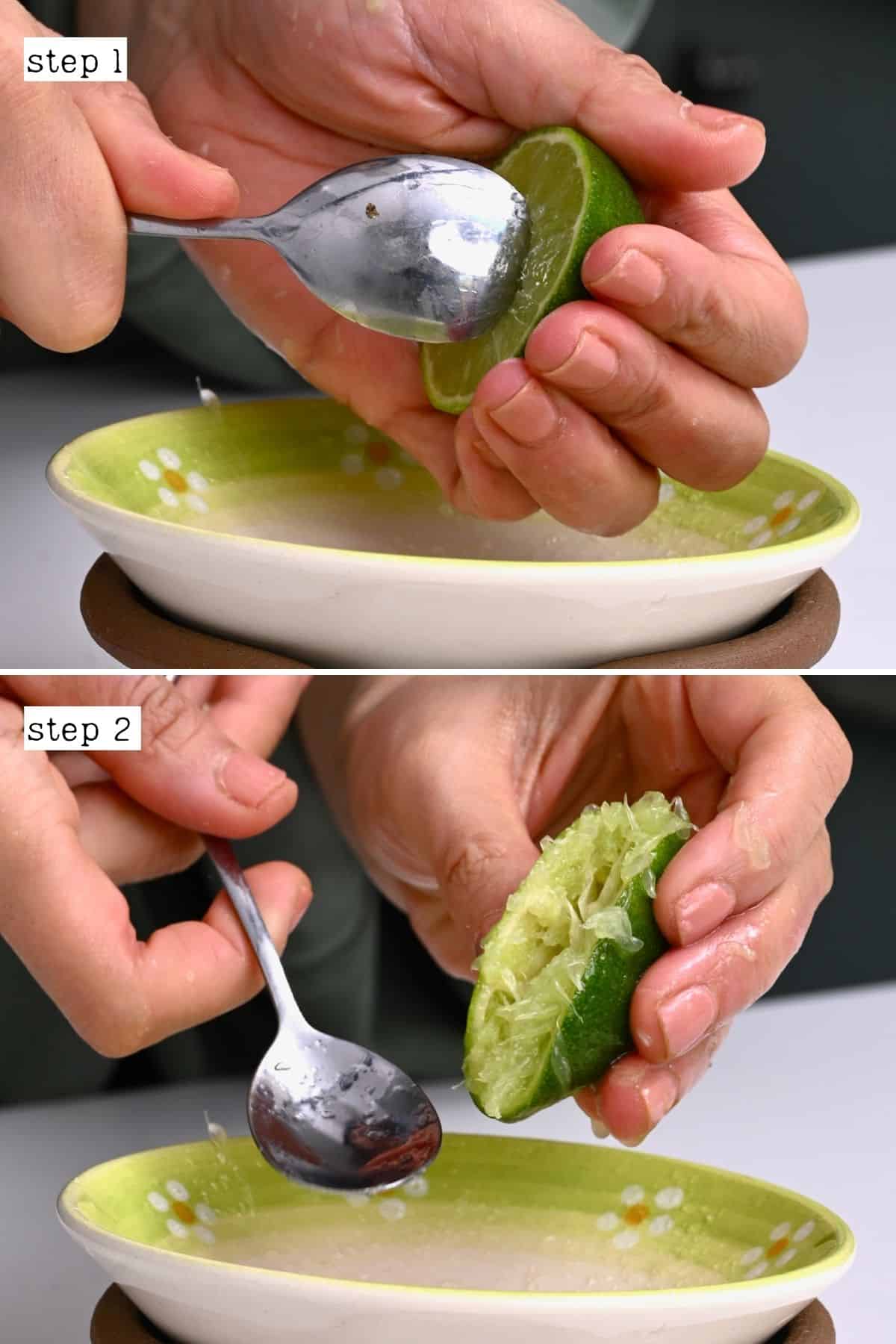
Stand mixer method
This method is a love-hate option. By beating the lime halves, skin-and-all, you get more oils from the zest (if you haven’t zested them already) in the juice. However, it’s slightly messier than other methods.
- First, slice the limes into lengthwise quarters and place them in your stand mixer bowl.
- Cover the bowl using a splatter guard (or a layer of clingfilm).
- Turn the mixer on LOW and allow it to crush/squeeze all the juice from the limes.
- Finally, pour that mixture through a sieve/nut milk bag.
Skewer method
If you’re looking for a way of juicing limes without cutting them open, this skewer method may be for you.
- First, microwave the lime/s for 20-30 seconds (each) and roll it back and forth on the countertops to loosen up the juice within the limes.
- Then, press a skewer (or chopstick) into the non-stem end of the lemon. Pushing it right into the fruit without coming out the other end.
- Then simply hold it over a container and squeeze. The pulp and seeds should stay inside while the juice streams out.
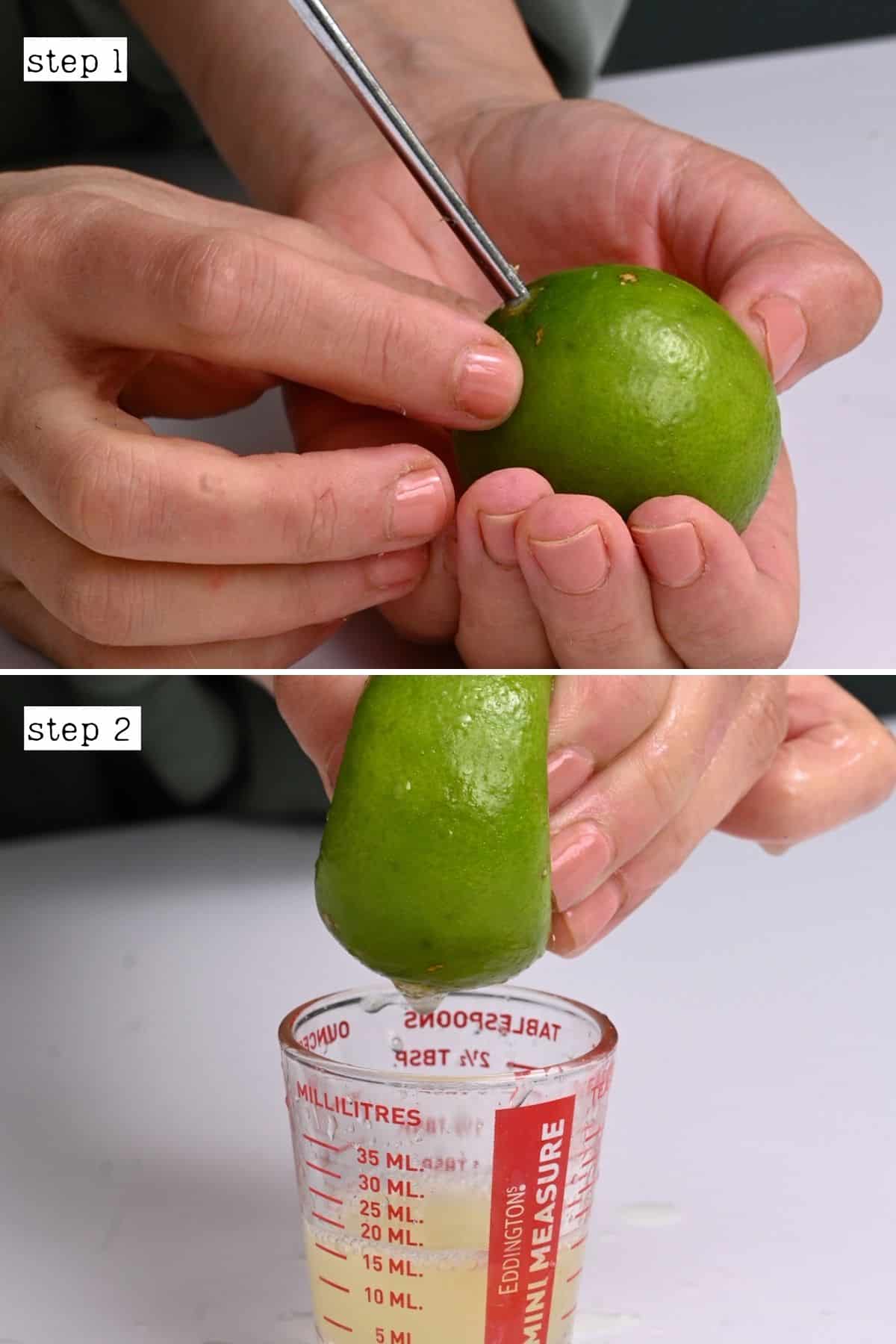
Freezer method
When freezing whole limes, the membranes expand and break. Upon thawing, that leaves you with super juicy limes that are super easy to squeeze.
- Place the lime/s in the freezer in a Ziplock bag and allow to freeze entirely.
- When you need the juice, allow the limes to thaw at room temperature. Then slice in half and squeeze by hand or with a fork/spoon.
How to store limes
One of the most common topics I received questions on regarded storing limes. How long do limes last? Can you freeze limes? How to freeze limes? Etc. So, let’s take a look at the best ways to preserve this fruit, whole, in slices, and the fresh lime juice/zest.
Do limes need to be refrigerated? If you plan to use them within 5-7 days, not necessarily. However, you will extend their shelf life by storing them in the fridge. To do so, I recommend storing them in a Ziplock bag (to stop them from drying out) in the crisper drawer. That way, they can last between 3-4 weeks!
Can you freeze limes? Absolutely. There are several ways that you can freeze limes in the freezer. These include whole, in wedges, or slices.
No matter which you choose, make sure to first wash them well and thoroughly dry them, too.
Whole limes
Place the limes in a reusable silicone freezer bag and label it with the use-by date. This way, you can store them for up to 12 months, though they are best within 6 months.
To defrost them, you can place them in the refrigerator overnight, keep them in the bag in a bowl of cold water for 15-20 minutes, or run them under warm water for 1-2 minutes. Alternatively, microwave them for just a few seconds.
Wedges and slices
Chop the fruit into your desired shape – wedges or slices (don’t cut the slices too thin) – and then place them on a parchment paper-lined baking tray, not touching. Flash freeze until solid (30-60 minutes). Then, transfer the pieces to a Ziplock style bag, label, and store.
Cut limes stored properly in the freezer will last up to 6 months. Just note that they will become very soft upon thawing. For that reason, frozen limes are best for juicing, adding to drinks, or cooking.
Allow the frozen lime/s to thaw in the refrigerator overnight. The wedges/slices could be added to drinks from frozen, too.
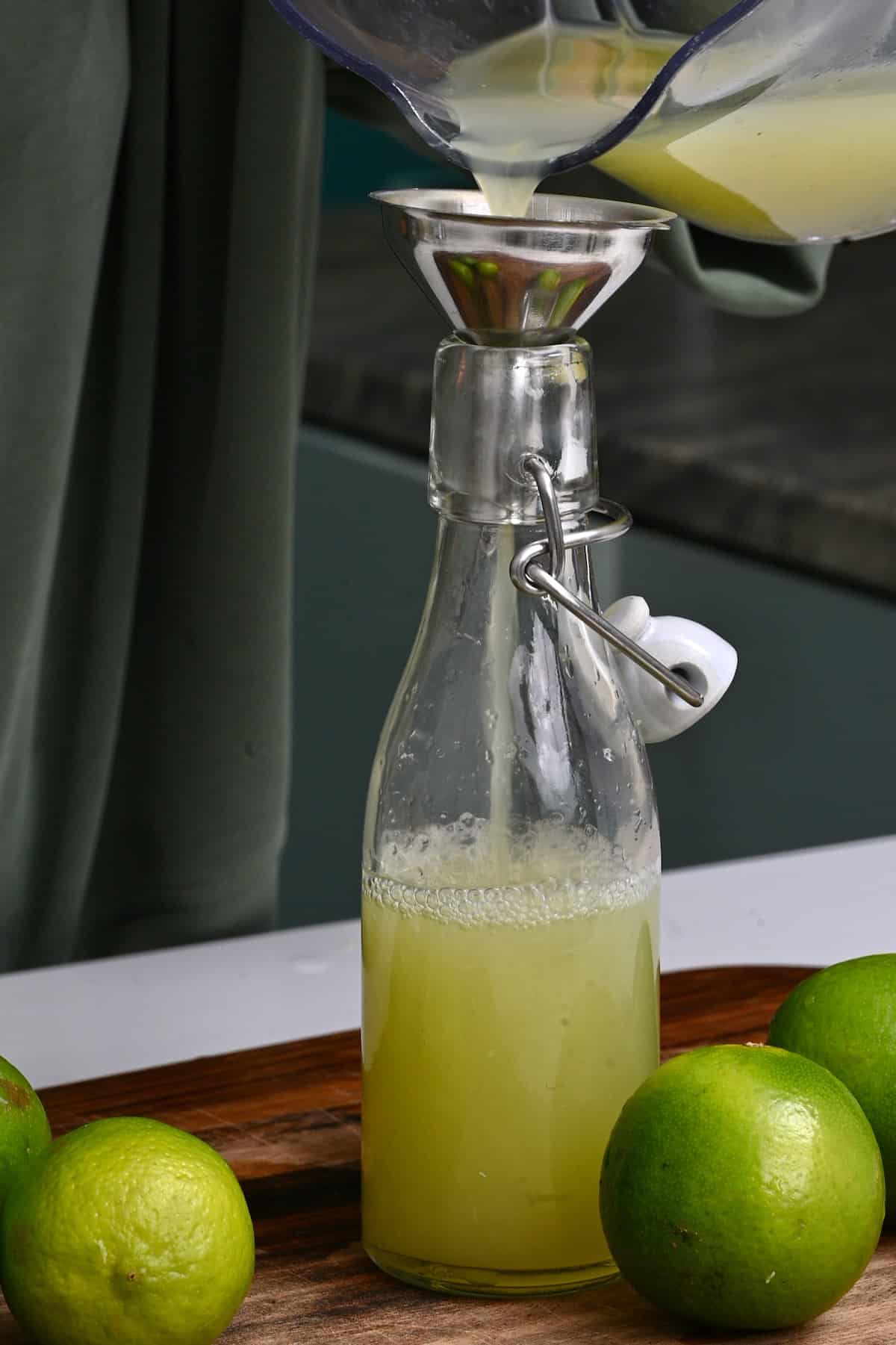
How long does lime juice last?
Fridge: store the fresh lime juice in an airtight container/jar in the refrigerator for 2-3 days. It will become more bitter over time, so freezing is best to store it for longer than a few days.
Freeze: you can pour the juice into a freezer-safe container, leaving ½-inch headspace. Alternatively, portion the juice into an ice cube tray (in 1-2 tablespoon portions). Store for up to 3-4 months.
You can allow the frozen juice to thaw in the refrigerator or simply pop an ice cube or two (or however many are needed) straight into your recipe of choice (like lemonade).
Lime zest
You can zest limes using any of the methods mentioned on my post how to zest lemons. Once zested, it’s best to use it immediately or transfer it directly to the freezer. It will dry out in the fridge if left for more than a day or two.
Freezer: either pack tightly (in 1 teaspoon or tablespoon portions) in ice cube trays or scoop into a reusable Ziplock bag (excess air removed). Freeze for 2-3 months; after that, they’ll begin drying out.
Leave the zest to thaw at room temperature (it thaws quickly), or use it directly in your recipe (if heat is involved).
Note that you can also zest whole limes directly from the freezer! So you may prefer to store them whole. You can also refer to this lemon zest post for tons of ways to use lime zest and this lemon juice post for how to use the peel/pith too!
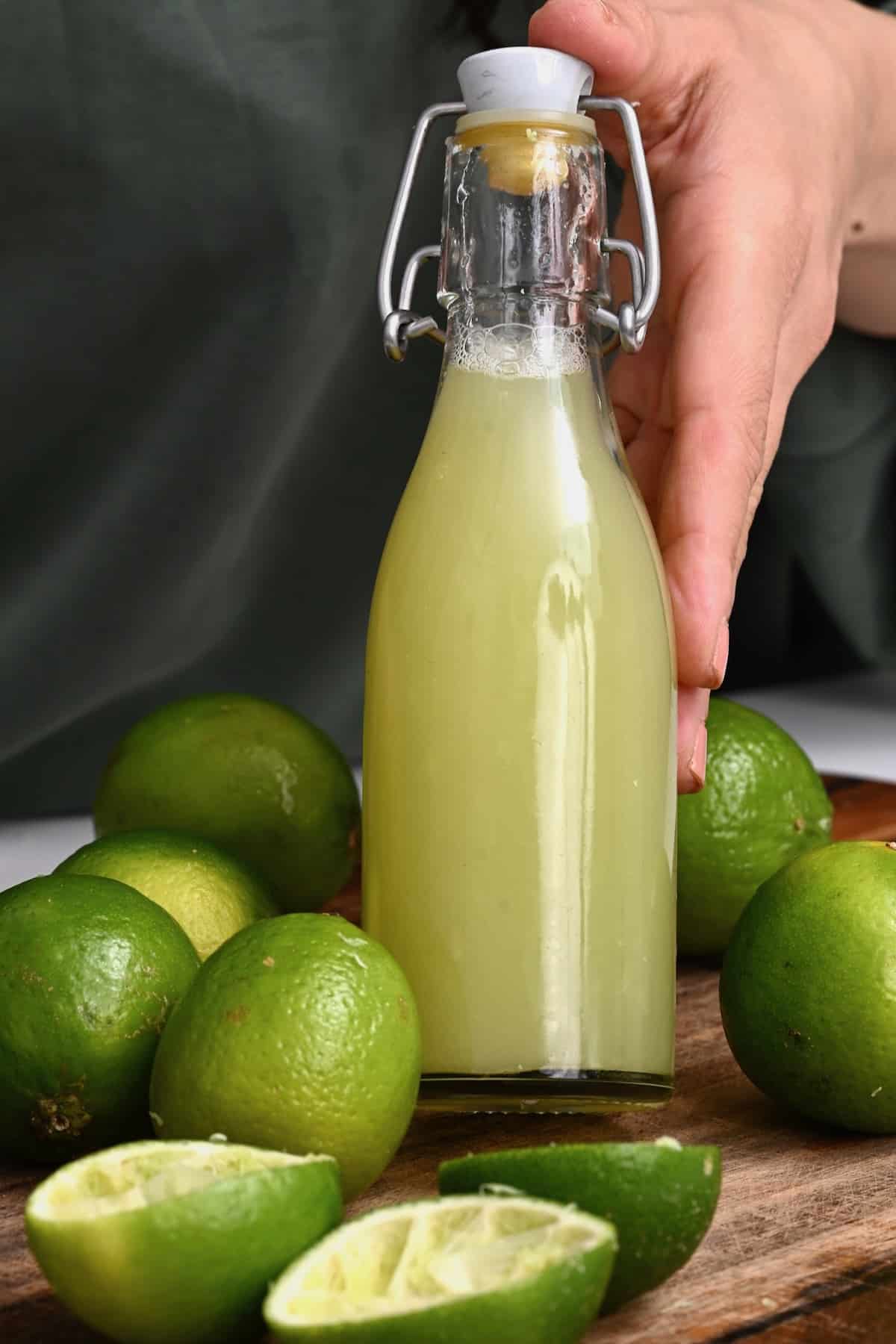
FAQs
There will be different amounts of juice, depending on the size. However, an average lime yields around 2 Tablespoons of fresh lime juice.
This depends on the exact size, usually, there are around 2 teaspoons of zest.
Most of the time, lime juice is best substituted with lemon juice. However, limes are slightly zingier, so you usually need slightly more lemon juice in your desired recipe.
Other substitutes include orange juice (in 1:1 ratio) and, in savory recipes, sometimes white wine vinegar (use ½ Tbsp per tablespoon of lime juice called for) can be substituted.
I would recommend using 8-9 limes to yield one cup of lime juice.
These two types of citrus juice are fairly similar in several ways, including nutritionally. However, lime juice is known to be more bitter (and more acidic). While similar in flavor, the two also have noticeably different flavors and scents.
Yes, both lemon and limes are keto-friendly.
Other juice recipes
- Apple Juice
- Orange Juice
- Watermelon Juice (4 methods)
- Cherry Juice (Multiple Methods)
- Peach Juice (Peach Nectar | 2 Methods)
- Easy Fruit Punch
If you try one of these methods for how to juice limes, I’d love to hear your thoughts/questions below. Also, I’d appreciate a recipe card rating below, and feel free to tag me in your recipe recreations on Instagram @Alphafoodie!

How to Juice a Lime (6 Methods With + Without Juicer | + Freeze it)
Equipment
Ingredients
- 1 lime or as many as needed
1 medium lime will yield about 2 Tbsp/30 ml.
Instructions
- No matter which of the below methods you use, here are a couple of tricks for how to get the most juice out of a lime (and most citrus fruits). These include:• Roll the limes on the countertop to break up/loosen the membranes.• Microwaving them for 20-25 seconds can help also loosen membranes and make it easier to extract the juice.• Slice them lengthwise instead of crosswise when juicing. Make sure to also always work with room temperature limes, as they'll be softer, so easier to juice.
Electric Citrus Juicer Method
- Slice the limes in half.
- Press each lime section against the reamer and let the machine do its thing.Most electric citrus juicers naturally filter the pulp/seeds from the fresh lime juice.
Citrus Reamer/Handheld Citrus Squeezer
- Tabletop version: slice the lime/s in half and, similarly to the electric juicer, place each over the juicer. Twist it back and forth over the reamer to release as much juice as possible.
- Hand-held reamer/Hinge-based juicer: first, place a bowl/container beneath where you'll juice the limes. To strain the pulp/seeds, I recommend placing a fine-mesh sieve above it. For the hand-held reamer, simply hold a half piece in the palm of your hand and use your other hand to press the reamer into the cut side of the lime halves and twist back and forth to release the juice. For a hinge-based juicer, place the lime half into the tool and then press it tightly close to squeeze out as much juice as possible.
Fork or Spoon Method
- Slice each lime in half and, working on one piece at a time, place them over a sieve-lined bowl.
- Press either a spoon or fork into the center of the lime segment and squeeze and twist. Use the fork/spoon to scrape against the lime's sides to extract as much fresh lime juice as possible.
Stand Mixer Method
- Slice the limes into lengthwise quarters and place them in your stand mixer bowl.
- Cover the bowl using a splatter guard (or a layer of clingfilm).
- Turn the mixer on LOW and allow it to crush/squeeze all the juice from the limes.
- Finally, pour that mixture through a sieve/nut milk bag.
Skewer Method
- Press a skewer (or chopstick) into the non-stem end of the lemon. Pushing it right into the fruit without coming out the other end.
- Then simply hold it over a container and squeeze. The pulp and seeds should stay inside while the juice streams out.
Freezer Method
- Place the lime/s in the freezer in a Ziplock bag and allow to freeze entirely.
- When you need the juice, allow the limes to thaw at room temperature. Then slice in half and squeeze by hand or with a fork/spoon.
Notes
Nutrition
Nutrition information is automatically calculated, so should only be used as an approximation.

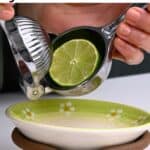














You are out of your mind telling people to put limes in the microwave. Depending on the lime, in 10-15 seconds or less, you can have 6+ inch flames shooting out the top of the lime and setting the microwave on fire. You don’t need to ask me how I know this for a fact. Unbelievably dangerous! If you dare to do this, don’t ever walk away from the microwave and carefully watch it the whole time.
Thank you so much for your feedback, Mark! Much appreciated! Indeed, better safe than sorry.